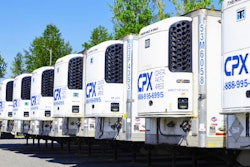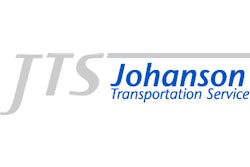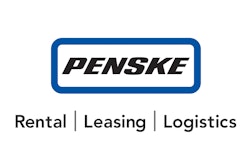
Logistics, warehousing and transportation are difficult enough, but as 3PLs begin to move further into the food supply chain, the complexities increase, especially when time and temperature are added into the mix.
The pain points they feel range from a variety of areas, including seasonal pricing shifts, transportation times, availability and efficiency of trailers, driver shortages, increasing regulatory issues, and a more global market, to name just a few. In addition, consumers are demanding fresher, locally sourced products, adding another layer of complexity.
With all of this stacked against them, why would 3PLs want to transition into the food and beverage sector or expand their operations if they’re already serving the space? After all, it’s expensive and risky, says Mark Smith, regional vice president of Penske Logistics. The cost of equipment can be enormous.
“A multi-temperature reefer trailer with a lift chain is going to be about as much as a tractor now, so over $100,000…whereas a dry trailer is under $20,000. The inhibiting factors on the transportation side are the start-up costs and maintenance that you have to spread out over the life of the trailer and life of the contract.”
On the warehouse side, the cost also can be prohibitive compared to a dry building, Smith explains. Because of the freezers, coolers, and related pipes and mechanics, it takes a larger crew who understands how to keep them working and do repairs quickly if necessary. Making that investment carries risk along with it. But, if done right, the risk will pay off.
“All that is more expensive, and you have to plan for it at the start-up. [It can be] lucrative because firms and consumers are paying for your expertise. They’re paying you to take the risk in all of this, whether it’s maintaining operating conditions of the trailer or ensuring product arrives within the correct temperatures. You’re taking all that risk, so they’ll pay more for it.”
A cold chain warehouse is approximately four times the capital investment of an ambient facility, according to Doug Harrison, president and CEO of VersaCold in Vancouver, British Columbia. He points out that a refrigerated trailer-tractor combination is about 60 percent greater than a dry trailer and tractor. “Certainly, you’re dealing with a much higher level of claims potential because of the sensitivity of the product.”
Going Global
VersaCold focuses exclusively on temperature-sensitive food and beverage products and has seen the landscape change in its 71-year history.
“First of all, the industry is far more global than its ever been,” says Harrison. “We’re seeing products manufactured around the world and being brought into local markets. This creates a number of supply chain challenges and border-point issues that we have to work through. We’re seeing far more regulations in terms of food safety, whether it be the Food and Drug Administration (FDA), the Canadian agencies, other global agencies…and much more rigidity around what exactly food safety means.”
Harrison also cites a consolidation of the customer base in food manufacturing as well as a shift in products. “Where you used to see a lot of canned [products] or products that had longer shelf lives, we’re now seeing much more high-quality prepared foods–fresh foods that all have a far greater sensitivity to temperature and shelf life.”
Penske’s Mark Smith has been in the industry for 30 years. In those three decades, he says, he’s “amazed” at how the world has gotten so much smaller.
“Products that you thought wouldn’t cross borders or are [going to] Europe from the U.S., [is something] you didn’t see years ago. There’s a blending of borders where you can find product nearly anywhere. People are looking for the best quality at the lowest prices.”
The issue of regulations has also blended across imports and exports. In the U.S., we export a lot of pork and poultry and import a large variety of food and beverage product. The impact of that, though, has been the regulations required to ensure that contaminated products don’t go in either direction.”
The regulations help reduce or eliminate the spread of food-borne illnesses from such events as mad cow disease or avian flu. Smith urges constant vigilance to assure that regulations are met. “We’ve had to learn and understand what these [regulatory] changes are. Ignorance of the laws are not going to excuse a regulatory offense.”
VersaCold’s Harrison adds that other investments will be necessary to meet the regulations, including technology to monitor temperature shifts as well as changes to product dates and codes. Having the capability to analyze the customer supply chain will only add greater efficiencies.
“We’ve invested just north of $1 million in a supply chain solutions team, which is a group of engineers who use advanced software to drive capability into our operating efficiencies, but mainly into our customers’ networks. We’ve invested heavily in a team of food scientists because all of our business is food related. We have a team of food scientists and food safety professionals that work closely in training our people and our customers in how to handle fresh product to get it through to market fast, but in a safe way.”
The Summertime Blues
The summer months add another layer of complexity to the food and beverage supply chain. “You always see the higher rates in the summer time, and that’s due to a lot of the vegetables and produce and food-grade items that are being harvested and shipped out,” says Jeff Mosqueda, vice president of sales, Temperature-Controlled Division, at Johanson Transportation Services. “When you’re moving food and beverage, the majority of it travels on reefers. There’s also heavier demand for trailers due to capacity spikes during peak markets around the holidays and summer months. You start to see a demand for capacity and with that goes the pricing.”
That creates additional pain points as it affects transit times and communications deadlines, which will be complicated even more as electronic logging devices (ELD) become mandatory. The phase-in compliance begins on Dec. 17 of this year. The full-compliance phase begins on Dec. 16, 2018.
“That’s going to have a huge effect on transit times,” Mosqueda says. “A lot of the food and beverage industry will now start demanding team runs, or go to a more regional-based distribution strategy because you can only legally travel solo 550 miles on the ELDs. It could add up to a day-and-a half to transit times.”
Work-arounds will be necessary to meet the ELD rules. Mosqueda advises dialogue with shippers, receivers and customers to do things like consolidating loads and working with drop trailer programs. He also advises that shippers have their products pre-staged so that trucks and drivers aren’t waiting and spending live hours and drive time sitting at the dock.
Meanwhile, there’s also the issue of driver shortages and finding talent who will work in very cold conditions, Harrison says. “In our warehouses, we’re looking for people that are willing to work at -25 degrees Celsius (-13 Fahrenheit) for 8 or 10 hours a day. And we’re looking for drivers that are going to be handling more dense products and deliver it to food retailers, directly into restaurants and into other franchise environments.
“We face the challenge of any 3PL– finding managerial talent, new talent that’s coming out of school.” One way is by working with schools on co-op programs.
The lack of available talent, whether it’s drivers or warehouse workers, is occurring “at an alarming pace,” Smith notes. “Just fulfilling those roles are becoming more and more difficult in today’s world because it’s hard, physical work with many hours. That’s probably the biggest issue we run into, and not just in food and beverage.
“On the food and beverage side, it’s not so much the regulations,” he adds. “It’s the customer’s expectations and our internal expectations to meet food handling performance indicators. We’re always seeking the right temperature consistently, making sure that there’s no gaps within the entire temperature of the cold chain process. Product must get manufactured, moved into a truck, transported to a distribution center and onto its final destination.”
I Want It and I Want It Now
We’ve all heard about the Amazon effect and how the company has changed the way supply chains operate. Johanson Transportation Services’ Mosqueda calls it “the elephant in the room.”
“They’ve created the supply chain juggernaut,” he says. “This includes the food and beverage [industry] and warehousing, as well as the demand for food and beverage. It was only five to seven years ago when you ordered a package and expected it to arrive in a week at best. That was the normal expectation when ordering online or through a catalog.”
In those days, Mosqueda adds, people would only order online if the local retail store didn’t stock what you wanted. And then you knew it would be a week or two before the item arrived.
Which brings us to the Amazon effect and the company’s recently approved purchase of Whole Foods—an internet company buying a brick-and-mortar company. What does that mean for 3PLs? Even more complexity caused by managing instantaneous demand, says Harrison.
“You’re moving away from typical stock orders to a retailer and into more longer-term cycles around replenishment. Today’s consumer expectations may mean that I have only hours to fulfill an order within a local market.
“It’s now about how do we leverage technology, analysis and local resources to make sure that we can fulfill that instantaneous demand,” he adds. “Of course, the complexity on food is short shelf life, the need to maintain product at a greater temperature requirement–all at instantaneous speed.”
Penske’s Smith sees a trend toward fewer brick-and-mortar operations, changing the way 3PLs operate.
“You’ll see more small packages, small deliveries going out, so that’s going to change our mode of transportation. We’re going to have to learn how to deliver to a home instead of a distribution center. We’re going to have to learn how to deliver to a small pod for a whole apartment complex instead of a grocery store. It’s going to change what that final mile looks like somewhat.”
A Final Bit of Advice
Even with 3PLs serving the food and beverage industry, efficiency remains key. That means maximizing trailer space, consolidating orders, and maximizing cost per box, advises Mosqueda. “You have to be on time, you have to be loading when you said you’re going to be loading, and delivering when [you said you would be] delivering. The days of the five-hour load or unload times really need to become extinct.”
Why? For your customers to compete effectively, they have to know exactly where their shipment is at all times, and exactly the cost.
“The analytics behind that,” Mosqueda says, “are second to none. You’re seeing MIT grads and Ivy League grads starting to get into the logistics and supply chain industry because it’s becoming a science.”
Hochfelder is a freelance journalist who has covered a variety of industries in his career, including supply chain. He also served as the former editor of Supply and Demand Chain Executive. Hochfelder is based in Arlington Heights, Illinois.
















